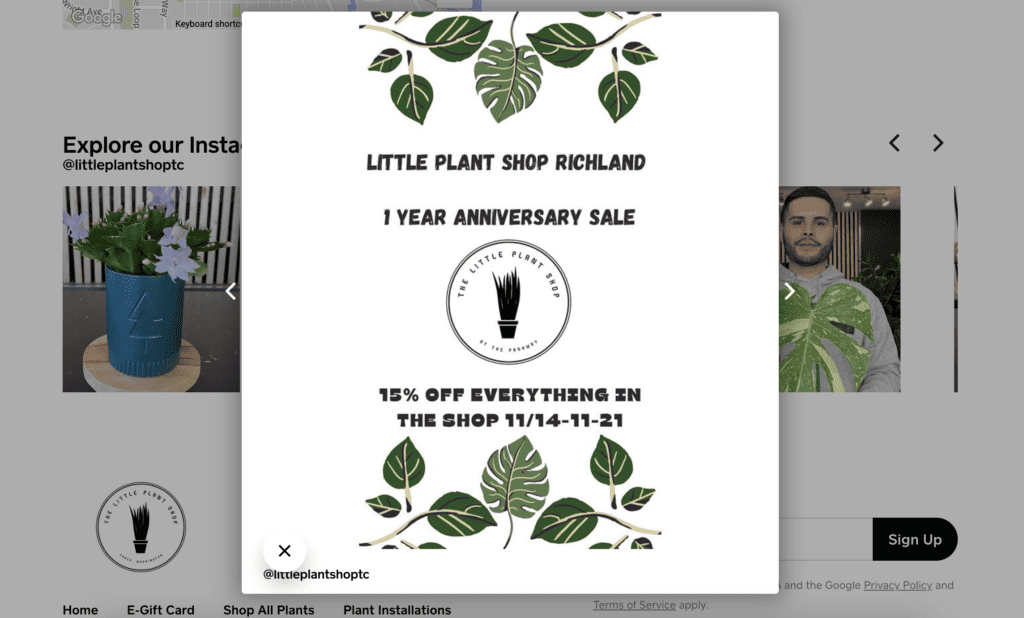Navigating the complexities of lead generation is an ongoing challenge for small business owners. As the economic landscape shifts and consumer behaviors evolve, the ability to generate consistent and quality leads becomes more critical.
Yet, many small businesses find themselves grappling with this crucial aspect, often wondering, “Why is lead generation so difficult?”
The answers are multifaceted and deeply intertwined with both market dynamics and internal business strategies.
In this article, lets go deep into the biggest challenges of lead generation facing small businesses today. From identifying ideal customers to optimizing lead nurturing processes, each section of this article is designed to address specific hurdles and offer practical solutions.
Whether you’re refining your current strategies or starting afresh, understanding these challenges is the first step towards mastering the art of generating leads effectively and ensuring the sustainable growth of your business.
Let’s explore how small businesses can turn these lead generation challenges into opportunities for expansion and success. If it interests you, you can also read my article on reaching out to cold prospects once you have cold leads.
Why is Lead Generation Difficult for Small Businesses?

Lead generation stands as a monumental challenge for many small businesses, including that of a close friend who runs a local specialty coffee shop.
Over a steaming cup of espresso, she confided in me the hurdles she continually faces, which echo the struggles many small entrepreneurs encounter. “It’s not just about getting leads,” she said, adjusting her glasses with a thoughtful gesture. “It’s about finding the right ones without breaking the bank.”
The time it takes to build a reputable brand is significant. When she first opened her doors, her brand was virtually unknown, overshadowed by established coffee giants.
“People trust brands they recognize,” she noted, explaining how the initial obscurity of her shop made lead generation an uphill battle.
The cost of acquiring leads can be prohibitively high, particularly for a small venture with limited marketing budgets. “Each lead costs me not just money, but time,” she remarked, reflecting on her early attempts to buy leads through online ads, which rarely converted into long-term customers.
The overwhelming amount of advice and strategies available on social media marketing added to her confusion. “Every expert has a different opinion on what platform is best.
I tried following all the advice and ended up spreading myself too thin,” she admitted, highlighting the challenge of navigating through the noise to focus on what truly works for her business.
The emergence of new marketing platforms means there are continually new avenues to spend money on. She shared an anecdote about investing in a trendy new social platform, only to find that her target demographic was barely present there. “It felt like I was throwing money into a pit,” she laughed, albeit ruefully.
Through these shared experiences, it’s clear that the difficulty in lead generation for small businesses like my friend’s coffee shop stems not only from financial constraints but also from the strategic dilemmas of where and how to invest in marketing.
Her journey underscores the nuanced nature of these challenges—balancing brand establishment, managing costs, cutting through marketing clutter, and making judicious choices about new opportunities. Each decision is a calculated risk, with real money and future prospects on the line.
What is the Biggest Challenge with Lead Generation Today?

The biggest challenge in lead generation today rests on securing not just any lead, but the right lead. The ideal lead is a blend of accurate customer profiling and genuine purchase intent.
However, achieving this in an era saturated with promotions and advertisements is increasingly complex.
In today’s digital marketplace, potential customers are bombarded with countless marketing messages daily, leading to what many describe as ‘advertisement fatigue.’
A good friend who owns a boutique online store shared her insights during one of our discussions. “People don’t just scroll past ads—they’re tuning them out completely,” she observed.
This mental tuning out is a survival mechanism against the relentless waves of promotions, which often lack personal relevance and fail to engage the potential customer meaningfully.
This bombardment has a direct impact on lead generation strategies. The mental fatigue caused by irrelevant ads means that even when the right customer is targeted, they might overlook the promotion simply because they’re overwhelmed.
As my friend put it, “It’s like being the right book on the wrong shelf. You can be perfect for someone, but if they’re too tired to browse that section, they’ll never find you.”
Moreover, the scarcity of attention is another hurdle. The modern consumer is starved for time and patience, making thorough research and comparison less likely.
They gravitate towards solutions that are not only immediately visible but also instantly understandable. This places immense pressure on small businesses to hit that narrow window of attention effectively.
Thus, the primary challenge in today’s lead generation landscape is cutting through the noise to reach customers who are not just part of the target demographic but are also in the right mindset to engage.
It’s about being visible in a way that is both appealing and timely, ensuring that when you do catch a customer’s eye, it’s not just another ad they scroll past, but a welcome solution to their current needs.
Identifying Your Ideal Customers: The First Step in Effective Lead Generation

Identifying your ideal customers goes beyond mere demographics and location; it requires diving deep into their specific pain points.
The process begins with recognizing the exact problems your product or service is designed to solve. For instance, if your business offers a time-management software, you would target professionals for whom time management is a critical pain point, potentially leading to lost revenue or job inefficiency.
Understanding these pain points in depth allows you to develop a highly focused lead generation strategy that resonates strongly with potential customers.
By concentrating on the issues that matter most to your target audience, you not only enhance the relevance of your marketing efforts but significantly increase the likelihood of converting leads into committed customers.
This approach emphasizes creating a match between your solution and the customer’s most pressing needs, ensuring your marketing message hits home and yields better engagement and conversion rates.
To understand this process fully you can read my detailed article on finding the target customer.
The Four L’s of Lead Generation Strategy: Lead magnets, Leads Capture, Lead Scoring and Lead Nurturing
The Four L’s of Lead Generation Strategy—Lead Magnets, Leads Capture, Lead Scoring, and Lead Nurturing—are critical components of a comprehensive marketing approach. Here’s how I’ve personally applied each component in my business:
1. Lead Magnets: I created a free downloadable guide titled “10 Secrets to Doubling Your Sales,” which targeted my niche audience of small business owners. This magnet effectively attracted leads by offering valuable insights in exchange for their contact information.
2. Leads Capture: Utilizing a custom landing page, I captured leads by integrating a sign-up form directly into the page. This form was linked to my offer, ensuring that visitors could easily access the guide while providing me with their email addresses.
3. Lead Scoring: After collecting leads, I used a scoring system based on engagement and demographic information. For example, leads who downloaded the guide and attended a follow-up webinar received higher scores, indicating they were warmer and more likely to convert.
4. Lead Nurturing: With a list of scored leads, I implemented an email sequence that provided additional value, followed up on their initial interest, and gently guided them towards making a purchase. This nurturing process helped in building trust and moving leads through the sales funnel more effectively.
Each of these steps played a crucial role in refining my lead generation efforts, ensuring that I not only attracted more leads but also effectively converted them into loyal customers.
Overcoming Marketing Hurdles: Common Lead Generation Problems Small Businesses Face

Small businesses often encounter several lead generation problems that can impede their growth and efficiency in marketing.
A common issue is a lack of focus on organic marketing channels. Many businesses overlook the long-term benefits of SEO and content marketing, leaning heavily on immediate results from paid advertisements on platforms like Google and Facebook.
This reliance on paid ads often comes at the expense of building a robust, owned email list, which is crucial for direct customer engagement and retention.
Additionally, the marketing landscape is crowded with consultants offering conflicting advice, which can confuse and overwhelm business owners.
This abundance of guidance, coupled with persuasive influencers on social media, can lead businesses to adopt strategies that do not align with their core objectives or audience needs.
The result is a scattered approach lacking a definitive marketing strategy, which is essential for coherent and effective lead generation.
Prioritizing a clear, focused marketing plan that leverages both organic and paid channels, while nurturing direct customer relationships through owned media like email, is key to overcoming these hurdles.
Learn how to make an effective marketing strategy before going into lead generation.
Lead Generation Techniques: What Works and What Doesn’t today
The below table summarises my experience from using all these lead generation mechanisms in my various roles to see what works best when it comes to converting to sales.
The effectiveness reflects if a lead is relevant and converts well.
The score from 1 to 10 reflects effectiveness, where 10 is most effective and 1 is least effective.
| Lead Generation Technique | Effectiveness Score (1-10) | Comments |
|---|---|---|
| Content Marketing | 9 | Builds trust and authority over time. |
| SEO (Search Engine Optimization) | 9 | Delivers sustainable, high-quality traffic. |
| SEM (Search Engine Marketing) | 7 | Quick results but depends on ongoing investment. |
| Social Media Paid Ads | 5 | Can be effective but often expensive and crowded. |
| YouTube Ads | 6 | Good for visual products but can be skipped by viewers. |
| Organic Leads from YouTube Videos | 8 | Effective if content matches user intent. |
| Google CPC (Cost Per Click) | 7 | Highly targeted but can be costly. |
| Trade Fairs | 8 | Great for B2B sectors, direct customer engagement. |
| Conferences | 8 | Effective for networking and targeted leads. |
| Cold Calling | 4 | Often seen as intrusive, low conversion rates. |
| Email Marketing | 9 | Cost-effective, great for personalized engagement. |
| Influencer Marketing | 6 | Depends heavily on the influencer’s relevance and audience engagement. |
This table reflects the relative effectiveness of each technique, emphasizing a preference for organic and relationship-based strategies over less personal, paid media approaches.
What this means is that in the long term, its always rewarding to have a relationship focussed and organic approach to lead generation which costs less and is more effective.
How to Solve Lead Generation Challenges with Smart Generation Campaigns

When the owners of a local gardening store sought to overcome lead generation challenges, they devised a clever drip feed campaign that cleverly leveraged various online channels.
They began by sharing sneak peeks of upcoming plant varieties and gardening tools on their social media platforms, accompanied by expert gardening tips tailored to the seasons.
These posts were scheduled at optimal times to maximize engagement and included calls to action encouraging viewers to subscribe for more exclusive content.
The store also implemented an email marketing strategy that offered a series of well-crafted, educational content about sustainable gardening practices, which was sent out to subscribers weekly.
This not only educated the audience but also built anticipation for the store’s opening.
Customer testimonials were prominently featured, with anecdotes from early subscribers who tried the products and visited the store, sharing their positive experiences.
“The tips I received through the emails were invaluable,” one customer mentioned, “and I couldn’t wait to visit the store and see everything in person!”
This strategic approach not only generated significant online buzz but also fostered a strong community of gardening enthusiasts.
The store’s opening day saw a turnout that far exceeded expectations, with many customers expressing a deep connection to the brand that had been nurtured online.
This campaign underscores how creating a fanbase or community can lead to a successful lead generation, transforming interested online followers into loyal, in-store customers.
The Role of Technology in Enhancing Lead Generation Efforts
Technology plays a critical role in enhancing lead generation efforts. Here is a table highlighting key technological capabilities that businesses should consider investing in to work smartly, quickly, and cost-effectively:
| Technology | Purpose | Benefits |
|---|---|---|
| CRM Software | Manage customer relationships and track lead interactions | Increases efficiency and organization |
| Marketing Automation | Automate repetitive tasks like emails and social posts | Saves time and ensures consistent contact |
| Analytics and Data Tools | Analyze data to optimize marketing strategies | Improves decision-making and ROI |
| AI and Machine Learning | Predict customer behavior and personalize experiences | Enhances targeting and personalization |
| Chatbots | Provide real-time customer support and lead capturing | Boosts engagement and accessibility |
| Email Marketing Tools | Streamline email campaigns and manage subscribers | Enhances reach and message consistency |
| Social Media Management Tools | Schedule posts, track engagement, and analyze trends | Streamlines social media strategies |
Investing in these technologies enables businesses to streamline their lead generation processes and tailor their strategies to meet the unique needs of their target audience more effectively.
Case Studies: Small Businesses Successfully Overcoming Lead Generation Challenges
Recently, I had a conversation with the owner of an event management company who shared their successful strategy for overcoming lead generation challenges.
This business owner focused intensely on building a strong network and community, which turned out to be their most valuable asset.
“Investing in relationships has paid off more than any advertisement ever did,” they explained.
They hosted community events and workshops that not only showcased their capabilities but also fostered a sense of belonging among attendees.
This approach created a ripple effect; satisfied clients became repeat customers and enthusiastic referrers. “Our clients feel like they’re part of something bigger, and they love to bring others into the fold,” the owner shared.
These clients often share their positive experiences on social media, further amplifying the company’s reach.
Anecdotes from clients about the exceptional personal touch they experienced became a common theme in these shares, which significantly enhanced the company’s reputation and consistently generated new leads.
This story underscores how building a community can be a potent tool in solving lead generation problems, turning every client event into an opportunity to expand their network further.
Future-Proofing Your Business Against Ongoing Lead Generation Challenges

As business owners face ongoing lead generation challenges, it’s crucial to adopt strategies that not only address current needs but also safeguard against future uncertainties.
Here are some strategic insights aimed at future-proofing your business:
- Invest in Content Marketing: Start by consistently creating and distributing valuable content that addresses your target audience’s needs and questions. This effort will position your business as a thought leader, enhance your SEO efforts, and attract organic traffic. The key is consistency and relevance—ensure your content is both engaging and informative to keep your audience coming back.
- Build and Utilize an Email List: Utilizing lead magnets effectively, such as offering free ebooks, checklists, or webinars, can help in growing a robust email list. An email list is a valuable asset because it allows you to have direct and repeated contact with prospects and customers, fostering relationships and encouraging repeat business.
- Foster a Community: Establishing a community around your brand can turn ordinary customers into loyal advocates. Host events, start a niche online forum, or create a loyalty program to engage your customers. This not only enhances customer loyalty but also encourages word-of-mouth referrals, which are often the most effective leads.
- Deliver Exceptional Customer Experiences: Ensure that every customer interaction with your brand is positive. This includes everything from the initial contact, through the purchasing process, to post-sale support. Satisfied customers are more likely to refer others, making customer service a powerful tool for lead generation.
- Leverage Word of Mouth and Referrals: Encourage and facilitate word-of-mouth marketing by providing incentives for referrals and sharing customer testimonials and success stories. Referral programs can effectively convert your existing customers into advocates for your brand, thereby generating trustworthy leads.
By implementing these strategies, you can build a sustainable lead generation system that not only meets current market demands but also adapts to future changes, keeping your business resilient and competitive.
